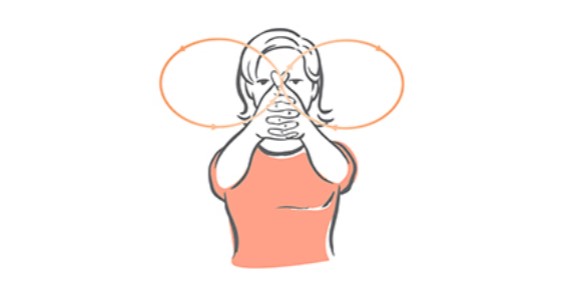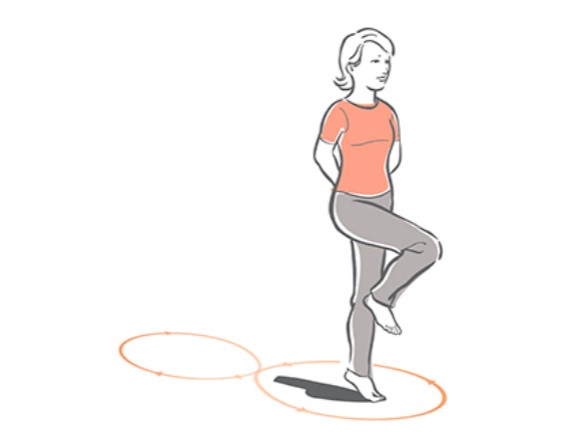
We empower ourselves to master change and be the creators of our lives when we practice being flexible, open minded, and creative.
If you’ve lived a little while, you’ve probably experienced the never-ending cycle of change that characterizes life. Whether it’s changing seasons or people who come in and out of our lives, we’re always in the flow of change. Sometimes the current of change carries us along smoothly, giving us ample time to adjust to the changing scenery. Other times the current drags us along, out of control, pulling us under as we head toward a steep waterfall.
Maybe the past couple of years were like that for you. The global forces that have affected many individual lives have asked us to adjust and be flexible. We’ve had to discover new ways of being, thinking, and doing in order to survive and thrive.
But even when we’re not in crisis, keeping our brains, and even our bodies, flexible remains important for changing into better and better versions of ourselves, based on our own values. That’s why being able to see beyond our box, try new things, and take on challenges is the second step in my Brain Education system of self-development.
Brain Education Step Two: Brain Versatilizing
The first step of Brain Education—Brain Sensitizing—lets us release stress and tension and connect body and mind. We become able to feel the life energy in our bodies and observe our bodies and minds with more clarity. From this perspective, we can see our habits and identify ones that are not useful for our present circumstances. Whether they’re damaging behaviors such as smoking or overeating, or they’re patterns of negative thinking, habits have been hard-wired into our brains, so as we’ve already experienced, they don’t change easily.
Luckily, the brain retains the ability to adapt throughout our lives. Like any other ability, this one can be strengthened with practice.
Brain Versatilizing exercises are like games that keep our brain nimble and force us to move and think in ways we normally don’t. They challenge us to see the fun in life and look for new experiences. Brain Versatilizing asks us to maintain a “beginner’s mind” that always looks at the world with a fresh perspective.
With this mindset, in addition to brain games, we can practice Brain Versatilizing by taking on new activities such as learning a new skill, meeting new people, or rearranging our space. We can also make our brains more flexible by making our bodies more flexible. Stretching our muscles and loosening our joints loosens our minds as well, allowing us to think in new ways more easily. A “versatilized” brain is a creative brain.
With a relaxed and creative brain, our efforts to challenge our brains will weaken the neural connections that hold old habits in place and gradually form new habits instead. In fact, flexibility and acceptance of change is a habit in and of itself. Perhaps you remember how much you could learn and do when you were younger. That skill may be rusty, and we may face some limitations because of our age, but we can still improve it if we work at it.
Key Brain Versatilizing Exercises
The following exercises are just a few of the ones you can do to improve the flexibility, creativity, and balance of your brain. Find more in my books, The Power Brain: Five Steps to Upgrading Your Brain Operating System and Principles of Brain Management: A Practical Approach to Making the Most of Your Brain.
Six Brain Games for Brain Versatility
Watch Gabi Petrylaite of Brain Education TV demonstrate six exercises that challenge your hand coordination and strengthen the nondominant side of your brain or body. Or read the instructions for two of them below.
Pinky Thumb
- Make your hands into fists and bring them in front of you with your fingers facing toward you.
- Point your left thumb and right pinkie to the left. Now bring them back in and point your right thumb and left pinkie to the right.
- Keep switching left and right. See how fast you can move your fingers. You may need to move one finger at a time a first, but work up to switching the fingers on both hands simultaneously and rapidly.
Infinity Symbol Drawing
- Raise one thumb (pointing upward) to eye level, holding it between your eyes away from your face.
- Draw an infinity sign (a sideways figure eight) in the air with your thumb. Move slowly and deliberately, concentrating on the movement. Hold your head still while following your thumb with your eyes. Repeat at least three times.
- Repeat using your other hand.
- Then try both hands. Clasp your hands with your thumbs crossing on top. Focusing on the intersection of your thumbs, draw an infinity sign.
- Next, try with your whole body. Raise both arms in front of you and trace a large infinity sign in the air with your hands, one hand following the other.
- Move your neck along with your hands and arms.
- Now, move your arms, neck, waist, and hips. Trace the infinity sign using your whole body as you simultaneously imagine the sign being drawn in your head.
- Then place your hands behind your back. Imagine an infinity symbol on the ground in front of you. Trace the symbol by skipping and hopping your way around its edge.
- Stop and sit in a half lotus position. Using your imagination, trace the infinity symbol in your mind.
- You can also meditate on the infinity concept. Connect with something outside yourself that offers your brain a feeling for the infinite. For example, you could look at the stars or read something from theoretical physics or astronomy, even something that seems over your head.


Eye Shifting
Move your eyes left and right for 20 seconds, as if you were watching a tennis match. University of Toledo researchers found that doing this stimulates the frontal lobes of your brain. It also enhances your ability to remember selective recent personal events.
Plan to Be Spontaneous
Change up your regular routine. Try a new driving or walking route or alter the order of your daily activities. Try a new dish or visit a new place every week.
Looking from Both Sides
- Think of something nonhuman. It could be an object or even a pet.
- Then, write a complete description of it, telling how it looks and acts.
- Now, write a description of yourself from the point of view of the object. How do you look from its perspective?
Challenging Assumptions
- When you hear yourself making inflexible pronouncements about your self-identity, preferences, beliefs, and how things should be, bring a more flexible brain to your thinking. Question assumptions that seemed immutable in the past and admit new possibilities into your perspectives.
- If you describe your life experiences in ways that lock you into a dysfunctional or unhelpful idea, try framing them in a new way. Tell your life stories to yourself by presenting them as difficult learning experiences that changed and empowered you.
Enjoy Ilchi Lee’s blog posts?
Keep up-to-date with weekly wisdom delivered directly to your email inbox.
If we aren’t careful, any of us can slip into complacency. While living this way may seem peaceful, it’s actually a state of restriction and stagnation rather than freedom. Instead, it’s a flexible and engaged brain that can handle all the challenges and changes we are met with that brings true and lasting peace.
This is the kind of peace that comes from knowing who we truly are. If our true self remains buried beneath unhelpful habits and inauthentic ideas about ourselves and our world, that self will never be expressed. But if we actively work to keep our minds open and admit a new, wider perspective, we’ll be on our way toward not only handling change, but being the creators of our own experience.
Related Posts
- How and Why You Should Wake Up Your Senses
- Meet This Centenarian Who Never Stops Learning
- How to Make Anything Possible
- [Video] Learn How to Observe Your Brain
- Have You Ever Eaten Aloe Vera?
Featured Video
More from Brain Education TV

